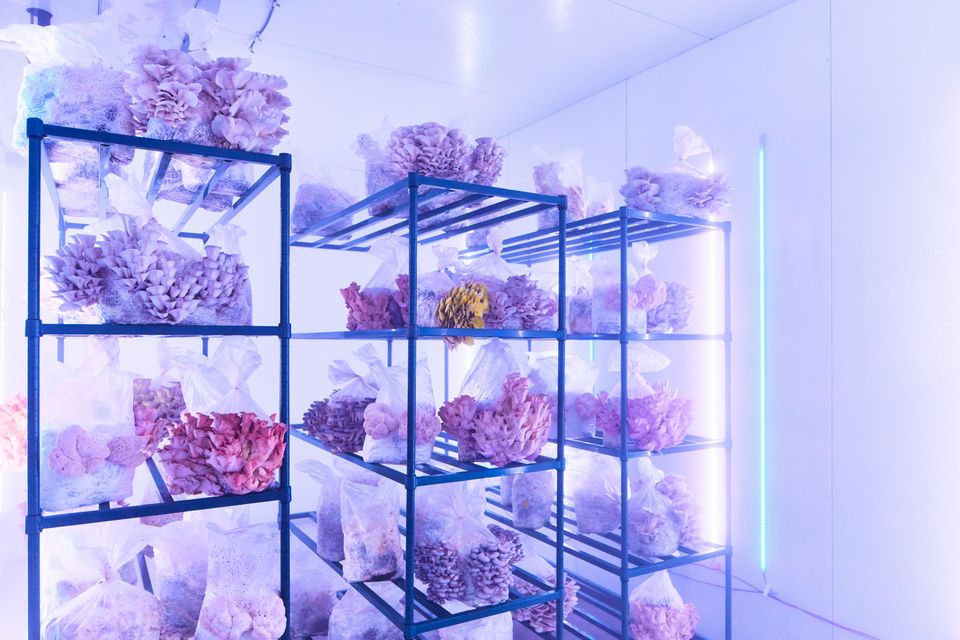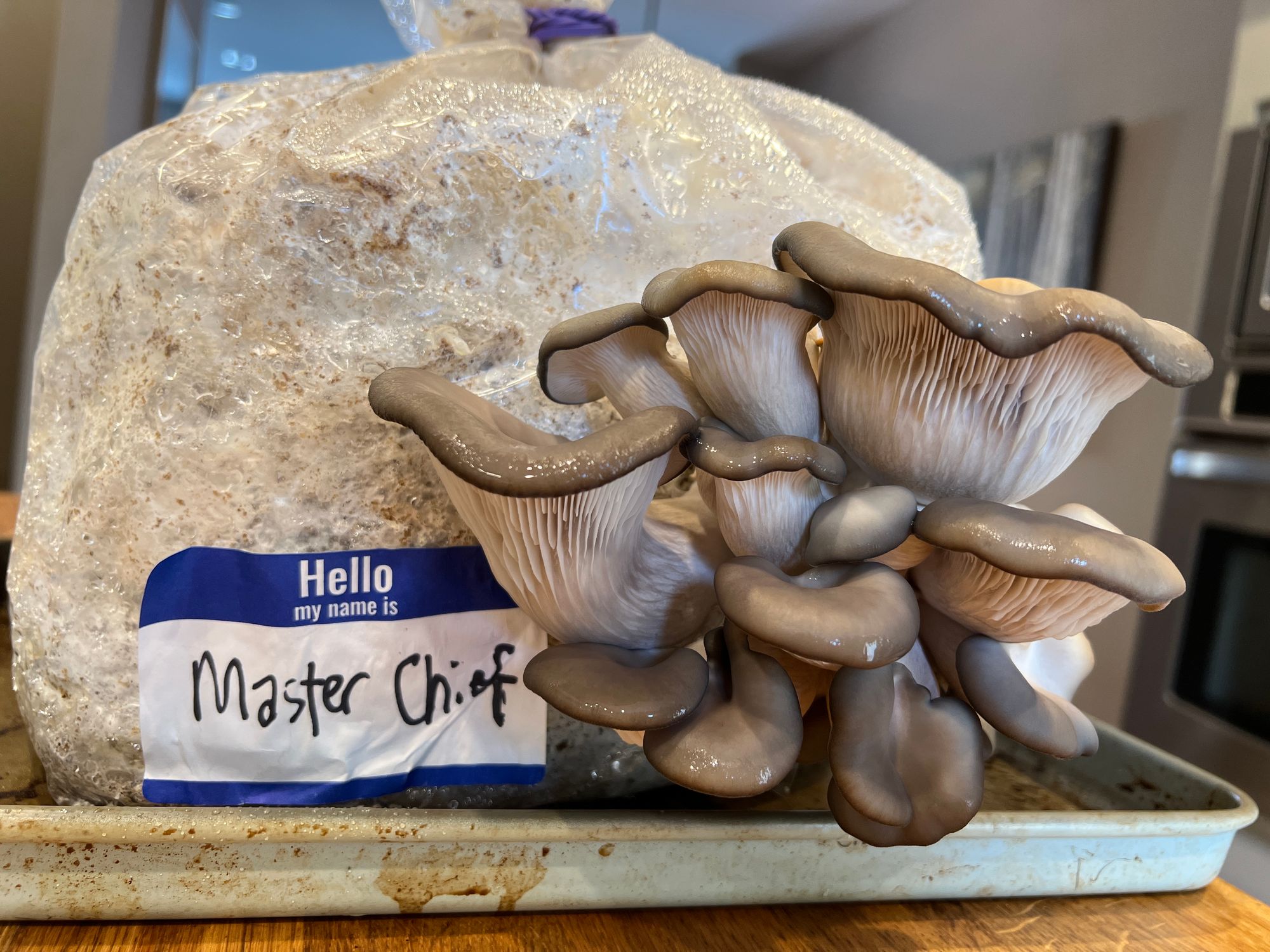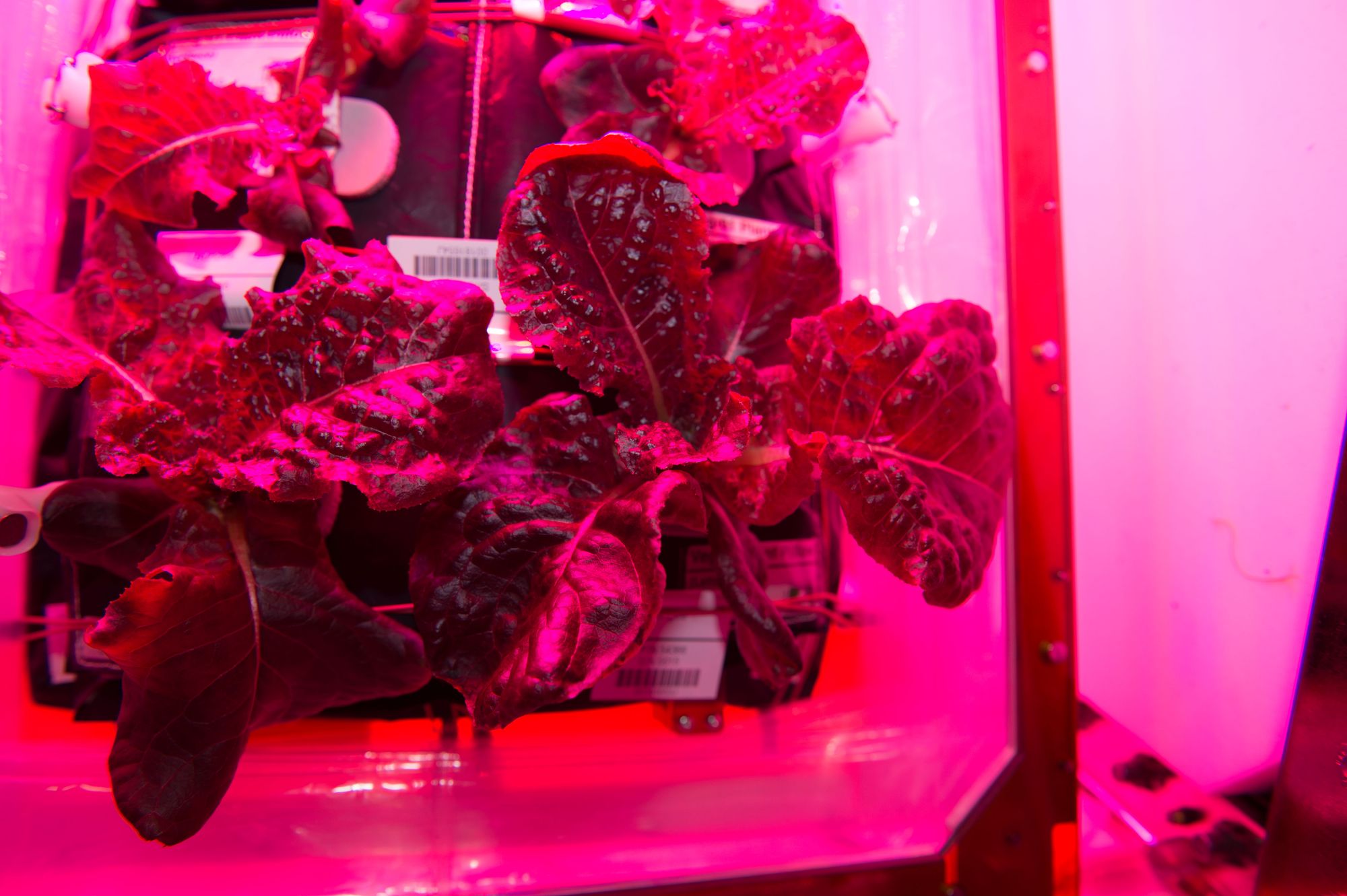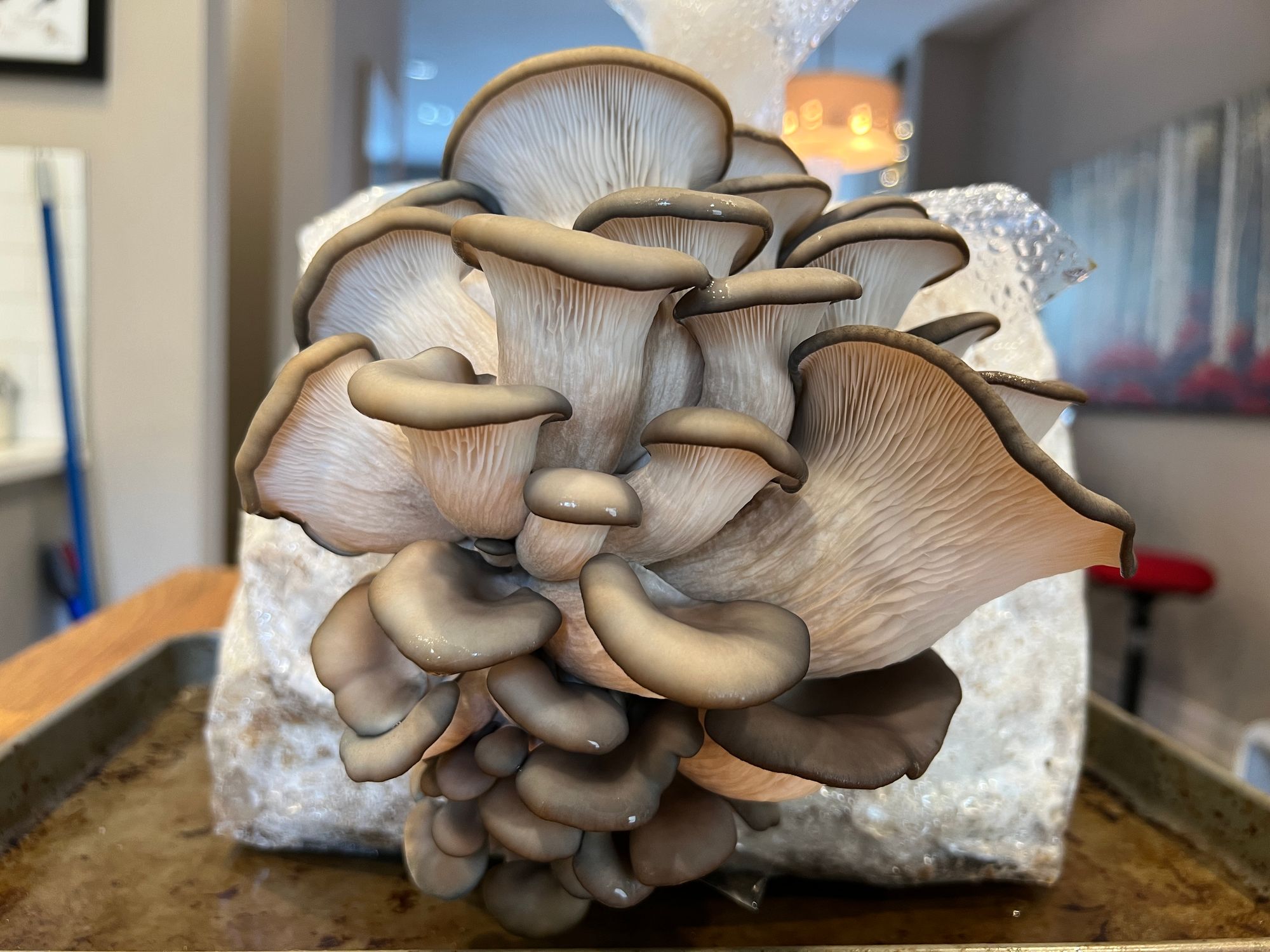How fungi can help feed future space colonies

This post is part of "Boldly Growing," a new Science of Fiction series about the future of food production and gastronomy.
The science fiction series The Expanse works hard to paint a realistic picture of what a future space-based society could look like — including what spacefarers will eat. Belters, the lanky, low gravity-adapted humans who live inside asteroids and space stations scattered across the outer solar system, are highly resourceful when it comes to finding calories. They use giant solar mirrors to grow crops on Jupiter's moon Ganymede and grow meat in vats, likely using advanced stem cell technology. But the staple of Belter cuisine, a dish somewhat demeaningly referred to as Belter kibble, stars another kingdom of life entirely: Fungi.
That's no accident. According to mushroom growers and scientists designing future foods for astronauts, there are a lot of good reasons why fungi might make an important contribution to spacefaring humans' diets, from their nutritional profile to their ability to grow quickly in dark, confined spaces.
Mushrooms are "really interesting for space production," Andrew Carter, CEO of the high-tech mushroom growing company Smallhold, told The Science of Fiction. "You can ramp up production really quickly. If you have a failure, getting your mycelium running is way faster than growing a crop again." Mycelium refers to the vegetative part of a fungus, as opposed to the fruiting bodies or mushrooms.
Belter kibble comes in two different varieties. Red kibble, according to The Expanse's Wiki page, consists of deep-fried balls of red bean paste, which is made of adzuki beans if it's anything like its East Asian counterpart. White kibble, meanwhile, is an umami bomb of mushrooms and cheese powder.
Cooked either way, this high-protein meal is designed to match the rigors of life in space, where portability and shelf stability are essential. While frequently served hot, references in the books indicate kibble can also be purchased in bar form, or as a drinkable, Gogurt-like substance. It's easy to see either red bean paste or mushrooms filling this role: Both are already used to make a variety of packaged foods including bars, powdered drink additives, and candies here on Earth.
But when it comes to finding a calorie source for mass production in space, mushrooms are particularly attractive for several reasons. Carter notes that mushrooms are already well-suited to indoor growing and have relatively simple resource requirements — namely, water, oxygen, and a growth substrate that includes carbon and nitrogen. Just about any carbon-based organic substance can in theory do the job, which is why mycelium is often grown on waste products like sawdust, corn husks, and even old cardboard or newspaper. On a spaceship where it's necessary to recycle resources to the utmost degree, compost or even human waste could be used as substrate — although the latter would create some additional health concerns that the growers would need to be mindful of.

Mushrooms are "very complementary to work with crop production systems because the waste, inedible biomass that the crop systems work with can serve as a source of inputs for growing fungi," said Ralph Fritsche, the spacecraft and exploration food systems project manager for NASA's Kennedy Space Center. "So from that perspective, you could see almost a mass loop closure begin to take place, which is very important when we start talking about long-duration missions."
Fungi, Carter notes, also have the advantage of producing calories very quickly. Smallhold sells at-home grow kits consisting of a roughly toolbox-sized brick of mushroom substrate (80-90 percent sawdust) inoculated with mushroom spores. When exposed to the air and misted with water to maintain a humid environment, it can begin producing baby mushrooms within just a day or two, as I discovered after setting up a blue oyster grow kit on my kitchen counter. After a little over a week, I had about two pounds of beautiful, ready-to-pick mushrooms on my hands. Meanwhile, the company's mini-farms — climate-controlled grow boxes that it sells to restaurants and other businesses — can produce 30 to 40 pounds of mushrooms in a week in a space of about 48 cubic feet.
This is in stark contrast to most plant-based crops that take weeks or even months to produce harvestable food. If disaster strikes a greenhouse growing corn or soy — like what happened in The Expanse when a battle above Ganymede station caused the solar mirrors to come crashing down on agricultural domes — people will need other sources of calories that can be scaled up quickly to prevent a famine.

Spacefarers trying to produce food far from the Sun can also take advantage of the fact that mushrooms, unlike plants, don't require light in order to grow. Like humans, fungi are heterotrophic, meaning they get their energy from breaking down existing carbon-based compounds rather than using sunlight to make new ones via photosynthesis. However, Carter notes that while fungi aren't photosynthetic, they are phototropic, meaning they use light as a cue to direct their growth and produce the types of mushrooms we're familiar with.
"If you’re gonna make something that looks like some alien organism that wouldn’t exist on Earth" you could grow mushrooms in pure darkness, Carter says. "But to make it more of a natural experience you would want some light."
Exposure to UV light also triggers mushrooms to produce Vitamin D. In fact, mushrooms are the only known non-animal food source of Vitamin D, meaning they could serve as an important source of the nutrient for sunlight-starved astronauts living in places where animal products are hard to come by.
Mushrooms can't meet all of our nutritional needs on their own. While they tend to be rich in protein and can provide many essential amino acids as well as things like potassium, fiber, and B vitamins, mushrooms aren't a great source of fats or vitamin C. Nor are there many among us who could stomach eating nothing but shrooms day in, day out — and "menu fatigue" is a real concern if we're talking about sustaining humans in space for a long time, Fritsche says.
"We have a long history of exploration as humans, and one of the things you find is that people on these long-duration voyages — even back to the days of polar exploration — would tire fairly quickly with limited food sources," Fritsche told The Science of Fiction. "We see the same thing happening on the International Space Station."

To prevent menu fatigue and maintain a nutritionally balanced diet, Carter suggests future spacefaring humans might want to grow mushrooms alongside a starchy food like potatoes (rich in Vitamin C), and a nutrient-dense green like kale, seaweed, or even edible algae. Helpfully, plants and algae also produce oxygen — which mushrooms and humans alike need to survive — while scrubbing carbon dioxide out of the atmosphere.
So, while they are unlikely to become the space version of Soylent, mushrooms could play a key role in humanity's future galactic gastronomy. It's not surprising, then, that mushroom-based staples appear in science fiction shows like The Expanse, nor is it a shock that NASA awarded several fungally-focused research teams prize money in the first round of its Deep Space Food Challenge, which focuses on innovative food production methods for future space living.
And there are worse things to have to eat on the regular. After my blue oyster mushrooms were ready to harvest, I started grilling them up and tossing them in a ginger-miso dressing. When I got tired of that, the rest made their way into a spinach and mushroom lasagna which even my mushroom-wary husband said was delicious. A bit more elaborate than Belter kibble, perhaps, but similar idea.
And hey, nobody said life in space was going to be lavish.